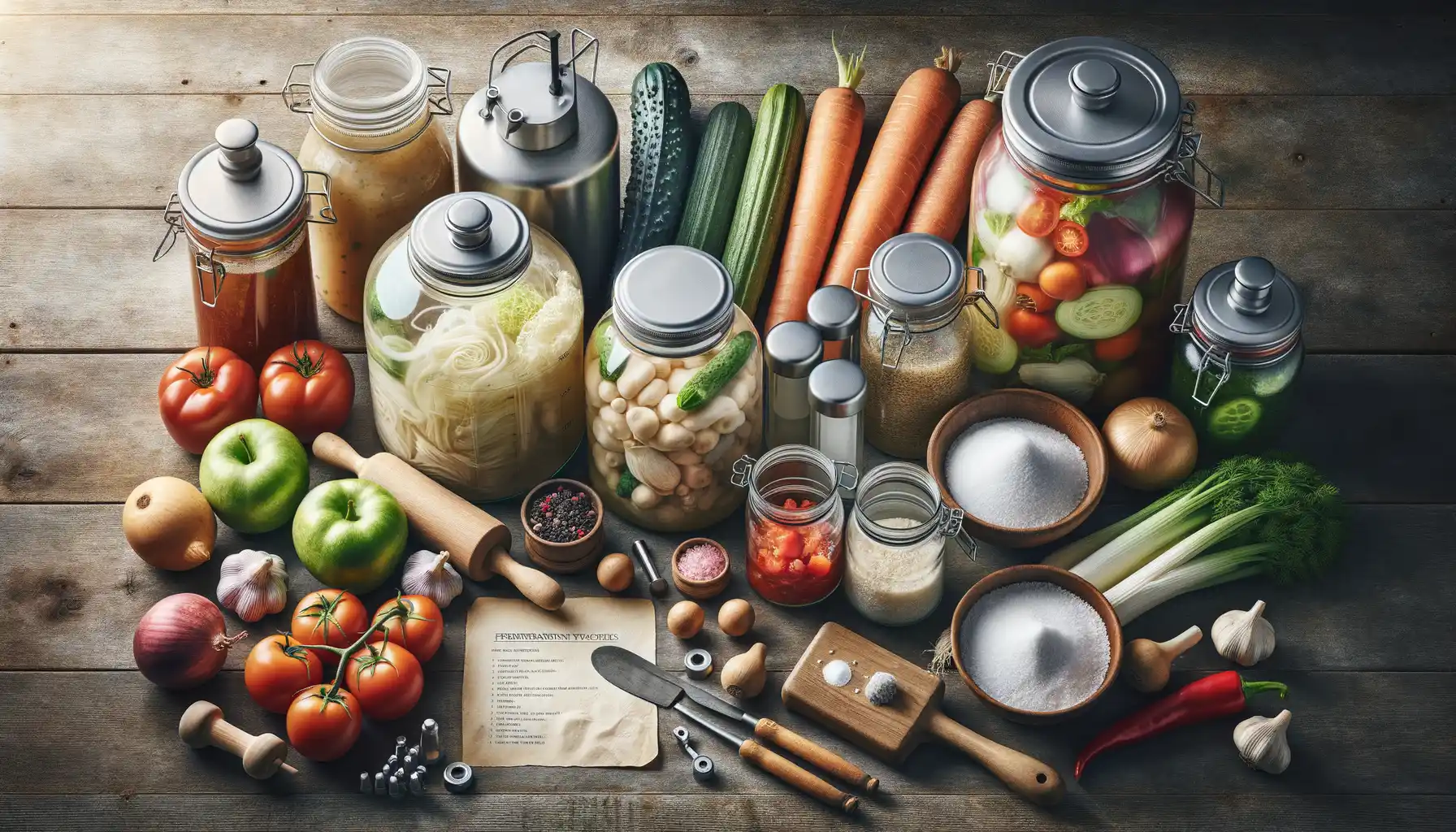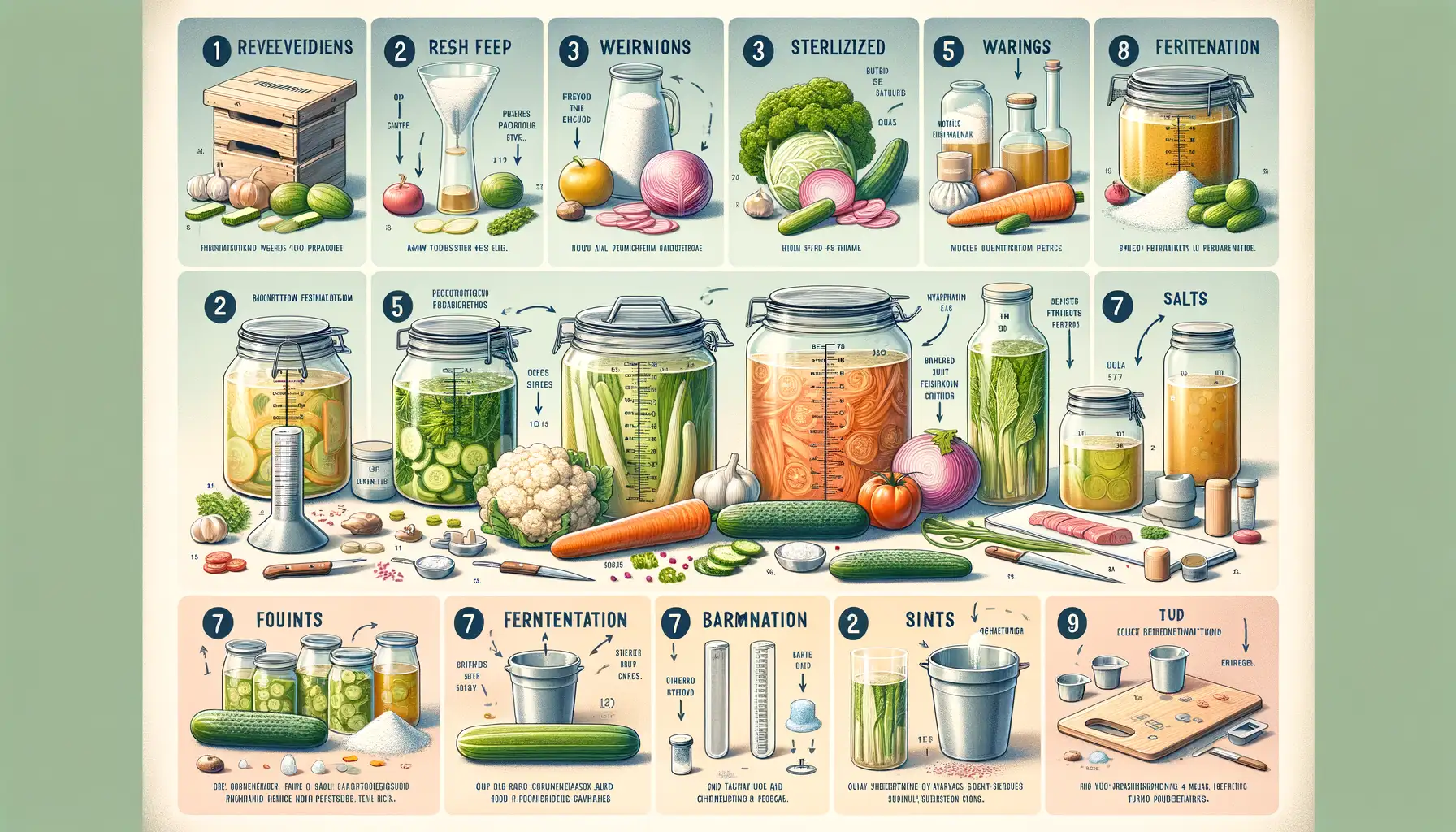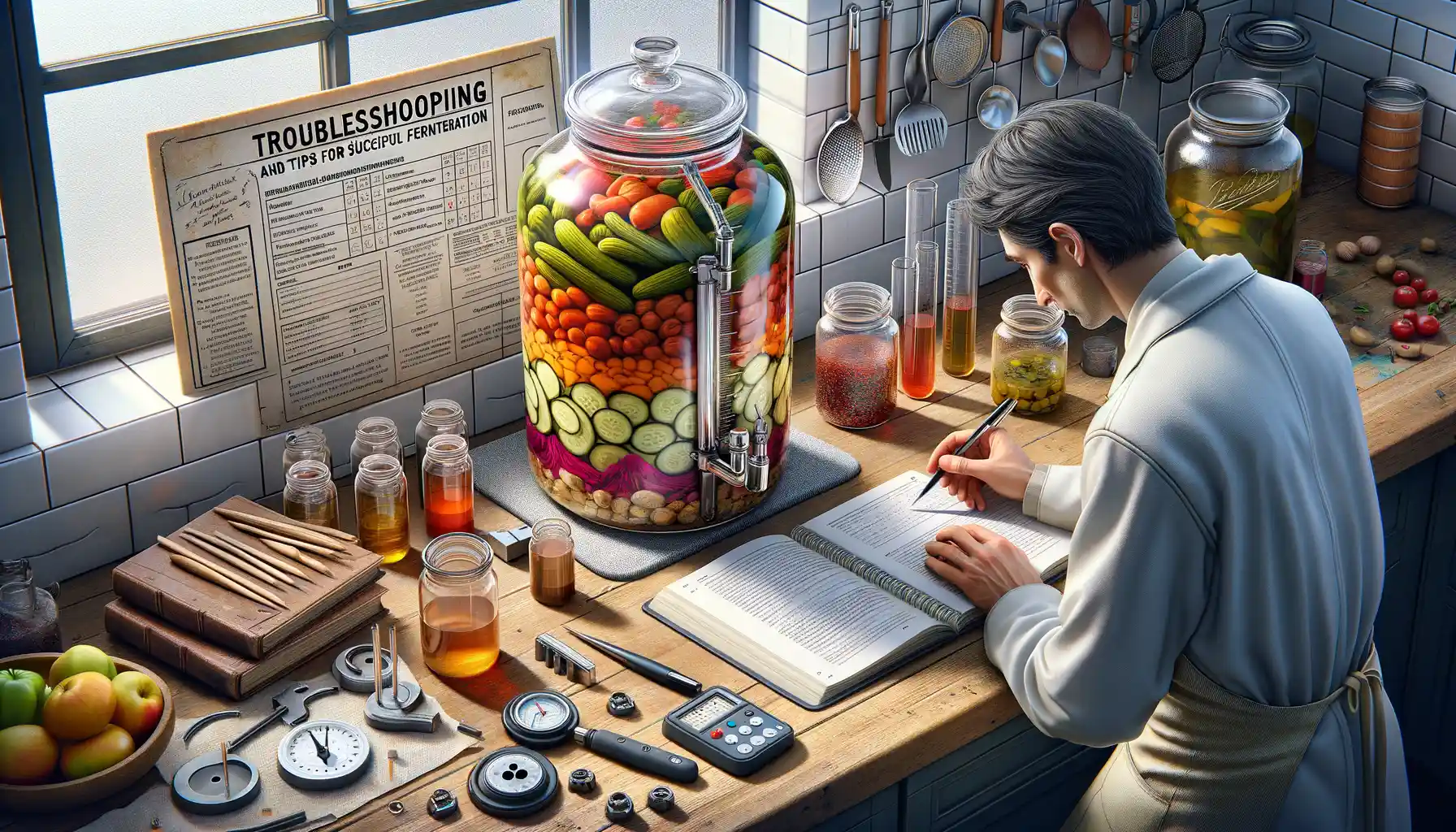Understanding the Basics of Fermentation
What Exactly is Fermentation?
Fermentation might sound like a science experiment gone rogue, but trust me—it’s pure kitchen magic. At its heart, fermentation is the art of letting friendly microorganisms, like yeast and lactic acid bacteria, work their transformative powers on your food. Think of it as turning good ingredients into something extraordinary. Have you ever bitten into a crunchy, tangy homemade pickle or sipped on fizzy kombucha and wondered, “How does this happen?” That’s fermentation in action!
Here’s the trick: during this process, microbes break down sugars into acids, gases, or alcohol, creating flavors you didn’t even know your taste buds craved. And the best part? It’s all done without chemical additives or high-tech gear—just nature doing its thing.
Key Elements to Kickstart the Fermentation Party
To master fermentation, you only need three ingredients:
- Salt: It’s the unsung hero, keeping bad bacteria at bay while encouraging the good guys to thrive.
- Time: Patience, my friend. Fermentation is a slow dance, not a sprint.
- The Right Environment: Dark, cool, and cozy spaces are ideal for those microscopic workers to thrive.
Take a leap into this ancient technique, and soon your kitchen will be alive with bubbling jars and delicious surprises!
Health Benefits of Probiotic-Rich Foods

Why Probiotic Foods Feel Like a Hug for Your Body
Imagine your gut as a bustling city. The residents? Billions of tiny microbes working day and night to keep everything running smoothly. When you eat probiotic-rich foods, it’s like welcoming friendly new neighbors who love helping out. These microscopic superheroes, found in treasures like sauerkraut, kimchi, and yogurt, are connected to benefits that ripple far beyond your belly.
For starters, they bolster the immune system. Ever notice how some people seem to dodge colds like ninjas? Their gut health might be the secret weapon. A well-fed microbiome can reinforce your body’s defenses, making you stronger against whatever comes your way.
Then there’s digestion—it becomes more of a gentle stream, less of the turbulent rollercoaster we often experience. Say goodbye to bloating and discomfort after meals! And if moods feel like stormy seas sometimes, here’s the magic: probiotics can help regulate those waves. After all, your gut and brain chat constantly.
- Stronger immunity: Goodbye sniffles, hello vitality.
- Happy digestion: Easier meals, better days.
- Mood balance: Your gut cheering you on.
The Beauty Boost: Skin, Energy, and Beyond
Here’s a surprising twist: probiotics don’t just pamper the inside—they adore your outside too. People rave about the skin-glowing effects of fermented foods. That stubborn acne or dull complexion? Your gut may be asking for a little love. Balanced bacteria mean fewer flare-ups and a more radiant you.
And energy? Oh, it’s no small thing. When digestion runs efficiently, your body frees up energy for living fully—not just slogging through the day. So, whether it’s chasing your kids or crushing a workout, probiotics fuel the fire. It’s not just food; it’s your secret power source.
Essential Tools and Ingredients for At-Home Fermentation

Gather Your Fermentation Arsenal
Creating your own probiotic-rich masterpieces starts with equipping yourself like a fermentation warrior! Picture this: jars bubbling with life, their lids poised like sentinels against oxygen. To bring this vision to life, here’s your must-have gear:
- Glass jars with airtight lids: Mason jars reign supreme, locking in flavors while keeping unwanted invaders out.
- Weights: Whether it’s fancy glass fermenting weights or improvised solutions (hello, clean rocks!), they help keep veggies submerged under brine.
- Fermentation lids and airlocks: Perfect for releasing gases without risking explosions—because no one wants sauerkraut on the ceiling.
- Wooden spoons: Metal can mess with fermentation magic; stick with trusty wood.
- Salt without additives: Think sea salt or Himalayan pink; table salt sits this one out.
The Star Ingredients That Make It Happen
Ah, the ingredients—the soul of every fermentation adventure. Start with fresh, vibrant produce like crisp cabbage, juicy cucumbers, or spicy radishes. These are your blank canvas. Then, sprinkle in some magic with unprocessed salt. Don’t forget water—filtered is best to avoid chlorine hitchhiking into your ferment.
For extra flair, consider adding spices: think bay leaves for crunchier pickles or garlic and dill for that bold, tangy kick. And if you’re diving into kombucha or kefir, grab a trusty SCOBY (Symbiotic Culture of Bacteria and Yeast)—it’s like adopting a pet that gives back!
Ready your tools and ingredients, and you’re halfway to crafting probiotic treasures that sparkle with life.
Step-by-Step Guide to Fermenting Foods

Your Fermentation Adventure Begins Here
Ready to dive into the exciting world of fermentation? Let’s lace up our aprons and get our hands deliciously dirty. This isn’t just about following directions—it’s an art, a science, and yes, even a little dance with nature.
Here’s what you’ll need to get started:
- The right jar: A mason jar or any glass container will do. Bonus points if it has a tight-fitting lid.
- Salt: Your fermentation fairy godmother—it helps preserve food and promotes the growth of friendly bacteria. Use non-iodized salts like sea salt.
- Your star ingredient: Vegetables, fruits, or dairy—pick what you love!
- Patience: Maybe the hardest part, but oh, so worth it.
The Magic in a Few Simple Steps
1. Chop your veggies (or slice them thinly for quicker fermentation). Think crispy cabbage for sauerkraut or snappy cucumbers for homemade pickles!
2. Brine time! Dissolve 2 tablespoons of salt in 1 quart of water. Pour that liquid goodness over your produce until fully submerged.
3. Press down and seal it up. Place a weight (a clean rock or fermentation weight works) to keep everything under the brine. Fermentation thrives when air is kept at bay.
4. Store it somewhere dark and cool. Within days, tiny bubbles—the joyful whispers of fermentation—will appear.
Every batch tells a story. What will yours say?
Troubleshooting and Tips for Successful Fermentation

When Fermentation Goes Sideways
Sometimes, despite your best efforts, fermentation doesn’t play along. Maybe your sauerkraut tastes off or that kombucha you’ve been nurturing smells a little too funky. Fear not! Even the most seasoned fermenters hit speed bumps.
First things first: Is your environment fermentation-friendly? Temperature is a key player here. Too cold, and your ferments slow down like a sleepy bear in winter. Too hot, and you’ll be throwing a wild party for the wrong bacteria. Aim for a cozy 65-75°F sweet spot.
And oh, let’s talk salt. Using the wrong amount can be a dealbreaker. Too little, and bad bacteria take over. Too much, and even the good guys won’t show up. Stick to high-quality, non-iodized salt, and measure with care.
- If mold appears on top, gently scrape it off—it’s usually not catastrophic as long as it hasn’t spread throughout.
- Notice a yeasty smell? That’s often just surface yeast (Kahm yeast), which is harmless but may taste odd. Scoop it away and taste-test what’s underneath.
Boosting Your Fermentation Mojo
For a stress-free ferment, cleanliness is your best ally. Always sanitize jars and tools before starting—think of it as prepping a VIP space for your microbial guests. And give time its due; impatience is the nemesis of fermentation. Trust the process—good things come to those who wait, right?
Pro tip? Label everything! Write dates, ingredients, and observations on your jars to track progress. A single marker and some tape can save you from wondering, “Was this kimchi batch started last Thursday—or three weeks ago?”